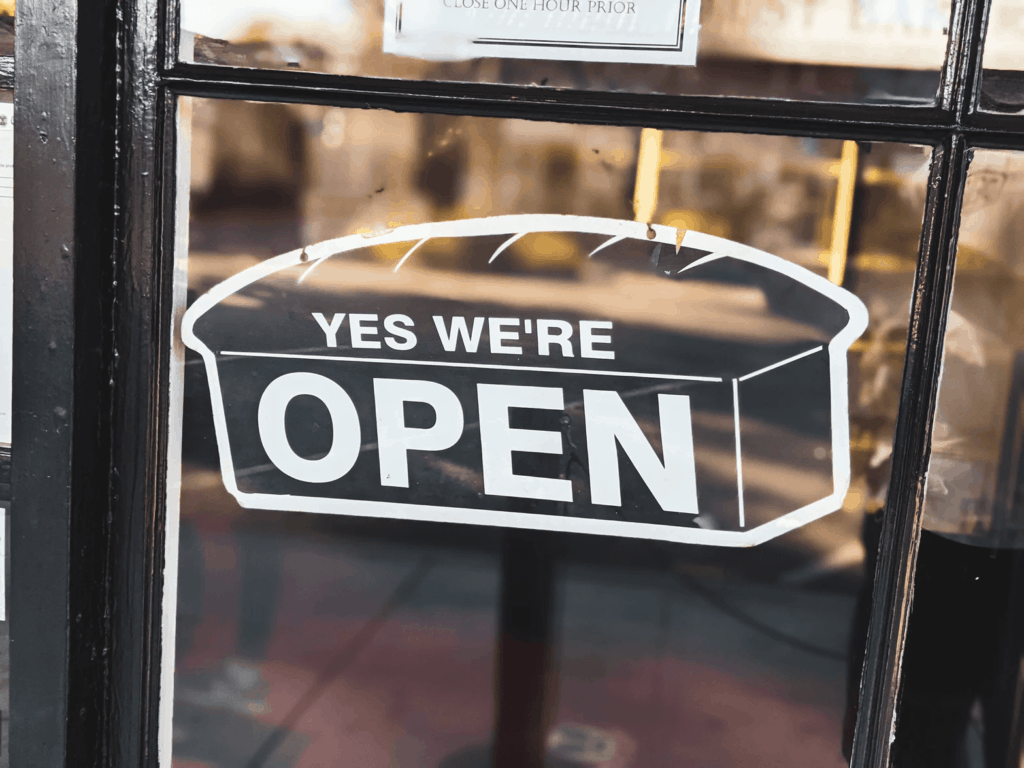🎉 Tillful is now part of Nav! Find the best small business loan at Nav
UPDATE July 15, 2021: The PPP general fund is now closed.
PPP applications remains open until May 31, 2021.
PPP applications closed on May 4th, 2021.
Here's how PPP Loan Forgiveness works and how to apply.
Beyond PPP: here's our always-up-to-date guide to all your COVID-19 relief options.
Join Tillful for free to find other funding options that are customized to your business needs and to get alerted when PPP applications open up again.
UPDATE December 27, 2020: The White House signed the $900 billion economic stimulus bill as part of the Consolidated Appropriations Act, 2021. The SBA has ten days after enactment to issue regulations. It appears business owners may be able to begin applying for new PPP loans sometime in the second week of January 2021. Given that information is subject to change, we will update you as more information becomes available.
The bill provides small businesses with over $300 billion in aid as follows:
- Over $284 billion to SBA for first and second draw PPP forgivable small business loans. It dedicates funds for very small companies and lending done through community-based lenders like Community Development Financial Institutions and Minority Depository Institutions.
- $20 billion to provide Economic Injury Disaster Loan (EIDL) Grants to business in low-income communities;
- $15 billion dedicated to shuttered live venues, independent movie theatres, and cultural institutions
- $12 billion to help businesses in low-income and minority communities.
What is the second PPP (PPP2)?
Under this legislation, the allocated $284 billion in PPP2 loans are available for the following three categories:
- First time PPP loans for businesses that qualify under the CARES Act but did not obtain a loan;
- Second draw PPP loans for business that obtained a PPP loan but require additional funding;
- Additional funding for businesses that returned their first PPP loan or did not get the full amount for which they qualified.
The SBA will forgive the loans if all employee retention criteria are met, and the funds are used for eligible expenses. No collateral or personal guarantee is required for PPP loans. Any portion of the loan that is not forgiven will bear 1% interest for a five-year term (two-year term if the loan was issued prior to June 5, 2020).
When does it begin?
On January 7, 2021, the SBA released guidance for PPP loans available under the Economic Aid to Hard-Hit Small Businesses, Non-profits, and Venues Act (the Economic Aid Act). Initially only community financial institutions will be able to make First Draw PPP Loans on Monday, January 11, and Second Draw PPP Loans on Wednesday, January 13. The PPP will open to all participating lenders shortly thereafter. The application will be open until March 31, 2021.
What is different from the first PPP?
The second draw PPP contains key differences from the first round:
Second-time borrowers: First-time qualified borrowers and previous PPP recipients will be eligible for another loan up to $2 million provided the eligibility criteria, as discussed further below, is met.
Additional expenses and covered period: In addition to the payroll, rent, mortgage, and utility expenses stipulated in the first PPP, there are a few more categories added to that list for PPP2. Under PPP2, borrowers can choose any covered period between eight and 24 weeks to use the funds in order to qualify for forgiveness.
Fintech companies approved to facilitate PPP2: While it was only traditional banks that were offering PPP loans originally, fintech companies have now also been approved by the SBA to accept applications and facilitate loans. This move is beneficial to small businesses which may not already have established relationships with large banks. In this time of need, fintech companies are able to fill that gap by addressing the woes of these small businesses.
Forgivable loans for certain not-for-profit organizations: PPP2 also makes available forgivable loans to not-for-profit organizations as defined under Section 501(c) (6) which includes business leagues, chambers of commerce, real estate boards, boards of trade and professional football leagues, and “destination marketing organizations” as defined in the act.
This is provided they have 300 or fewer employees and do not receive more than 15% of receipts from lobbying. The lobbying activities must comprise no more than 15% of the organization’s total activities and have cost no more than $1 million during the most recent tax year that ended prior to February 15, 2020.
What is the maximum loan amount?
The maximum loan amount for second-time borrowers is $2 million. The cap for first-time PPP borrowers remains at $10 million, as per the first round.
How can borrowers calculate the maximum loan amount?
To calculate the maximum loan amount, PPP2 borrowers may multiply by 2.5X the average gross monthly payroll of their business (except businesses in the hospitality industry with a NAICS code beginning in 72). Borrowers may choose either one of the following two methods to arrive at their maximum loan amount:
- Average gross monthly payroll cost for the 1-year period before the date of the loan X 2.5
- Average gross monthly payroll cost for either 2019 or 2020 X 2.5
Meanwhile, borrowers in the hospitality industry that have North American Industry Classification System (NAICS) Code 72 may use a 3.5x multiplier of their average monthly payroll costs to calculate their maximum loan amount.
Seasonal employers calculate their maximum loan amount differently based on average monthly payroll costs for any 12-week period between February 15, 2019 and February 15, 2020.
New businesses (that were not in operation for the 1-year period before February 15, 2020) will divide the payroll costs paid or incurred by the date of loan application by the number of months those costs were incurred. This result will be multiplied by 2.5 (or 3.5 for businesses with NAICS code starting with 72) to arrive at the maximum loan amount.
Who is eligible for PPP2?
PPP2 loans will be available to both first-time borrowers and also to second-time borrowers that previously received a PPP loan. The following entities may be eligible for a loan under PPP2:
- Businesses with 500 or fewer employees that are eligible for other SBA 7(a) loans.
- Sole proprietors, independent contractors, and eligible self-employed individuals.
- Not-for-profit organizations as defined under Section 501(c) (6) which includes business leagues, chambers of commerce, real estate boards, boards of trade and professional football leagues, and “destination marketing organizations” as defined in the act
- Accommodation and food services operations with NAICS codes 72 with fewer than 300 employees per physical location
- News organizations that are majority-owned or controlled by an NAICS code 511110 or 5151 business or not-for-profit public broadcasting entities with a trade or business under NAICS code 511110 or 5151.
Can small businesses apply for a second time?
Yes. In order to qualify for a second draw PPP loan capped at $2 million, a borrower must:
- Have 300 or fewer employees;
- Have used or will use up the full amount of their first PPP loan; and
- Have experienced at least a 25% gross revenue decline in any 2020 quarter compared to the same quarter in 2019.
Who is not eligible for PPP2?
Businesses that are ineligible for second draw include businesses engaged in political or lobbying activities (CARES Act makes an exception for certain not-for-profit organizations) and businesses with at least 20% ownership by China.
Publicly traded companies, businesses that were not in operation on February 15, 2020, and entities that receive shuttered venue operator grants are also not eligible to receive PPP loans under rules provided for in the Act.
NEW! – If you're not eligible for PPP2 and aren't able to apply for a PPP loan, a small business loan may be right for you and your business. Tillful Funding is a small business credit marketplace in partnership with the best small business lenders such as Biz2Credit, OnDeck and more. Apply for funding in under 10 minutes at: tillful.com/apply-funding
How to apply for PPP?
Tillful has partnered with Biz2Credit to provide a seamless application process that can help fast-track your application to SBA. You can visit here.
Small businesses can apply through any existing SBA-approved lender or through any federally insured depository institution, federally insured credit union, and Farm Credit System institution that is participating.
The applicant is also required to submit additional documentation, as specified in SBA’s policy guidance, depending on whether the applicant is self-employed with employees, self-employed with no employees or not self-employed.
What makes it a forgivable loan?
The PPP is designed to incentivise small businesses to keep their employees on payroll and to pay other specific non-payroll expenses. Similar to the first PPP, borrowers will have to spend no less than 60% of the funds on payroll costs over the covered period. Payments on business mortgage interest payments, rent, or utilities are also forgivable if they make up less than 40% of loan amount.
Under PPP2, borrowers can choose any covered period between eight and 24 weeks to use the funds in order to qualify for loan forgiveness.
What payroll costs are forgivable?
The forgivable payroll costs include:
- Salary, wages, commissions and tips – up to $100,000 annualized for each employee
- Employee benefit including costs for vacation, parental, family, medical, or sick leave; allowance for separation or dismissal; payments required for provisions of group healthcare benefits including insurance premiums; and payment of any retirement benefit
- State and local taxes assessed on pay
For sole proprietors and independent contractors, payroll costs include wages, commissions, income or net earnings from self-employment, based on 2019 income capped at $100,000 on an annualized basis for each employee.
What non-payroll costs are forgivable?
PPP loans used for non-payroll costs may be forgivable provided these expenses make up no more than 40% of the total loan amount, and are business-related qualifying expenses during your chosen eight to 24 week covered period.
These forgivable business expenses include:
- Rent and lease payments
- Mortgage interest payments
- Interest payments on a loan needed to operate the business
- Utility payments
- Covered worker protection and facility modification expenditures, including personal protective equipment, to comply with COVID-19 federal health and safety guidelines
- Covered supplier cost that are essential at the time of purchase to the recipient’s operations of the entity
- Covered operating costs such as software or cloud computing services that facilitates business operations
- Covered property damage such as costs related to vandalism or looting due to public disturbances in 2020 which were not covered by insurance and other compensation
In addition, PPP2 will also offer simplified loan forgiveness for loans of $150,000 or less.
What is simplified loan forgiveness?
Borrowers that receive a PPP loan of $150,000 or less shall receive forgiveness provided the borrower signs and submits a one-page certification to the lender that includes:
- Description of the number of employees the borrower was able to retain because of the loan;
- Estimated total amount of the loan spent on payroll costs; and
- The total loan amount.
The SBA has not released the simplified application form but is required to do so by January 20 (within 24 days of the law enactment).
When should a borrower apply for loan forgiveness?
A borrower can apply for forgiveness once it has used all loan proceeds for which the borrower is requesting forgiveness. Applications for forgiveness can be made any time up to the maturity date of the loan.
If borrowers do not apply for forgiveness within 10 months after the final day of the covered period, then PPP loan payments are no longer deferred and borrowers will begin making loan payments to their PPP lender.
How to apply for loan forgiveness?
To apply for loan forgiveness, lenders can provide applicants with either the SBA Form 3508, SBA Form 3508EZ, SBA Form 3508S, or a lender equivalent. The 3508EZ and the 3508S are shortened versions of the application for borrowers who meet specific requirements.
The applicant will need to compile payroll and non-payroll documentation as specified by SBA. The forgiveness form and supporting documentation can then be submitted to the PPP lender.
If SBA undertakes a review of the loan, the lender will notify the borrower of the review and the SBA’s review decision. The borrower has the right to appeal certain SBA loan review decisions. The lender is responsible for notifying the borrower of the forgiveness amount paid by SBA and the date on which the first payment will be due, if applicable.


